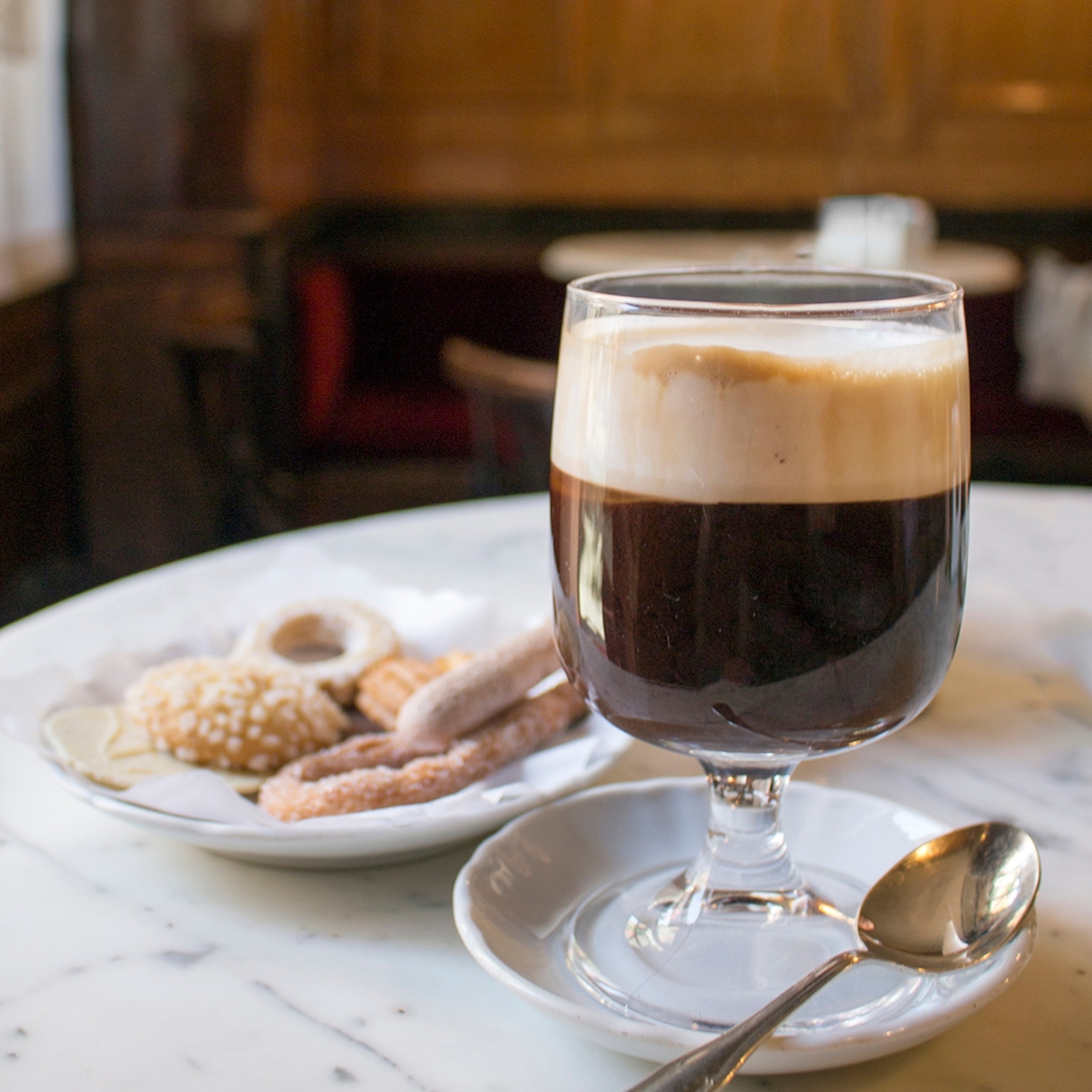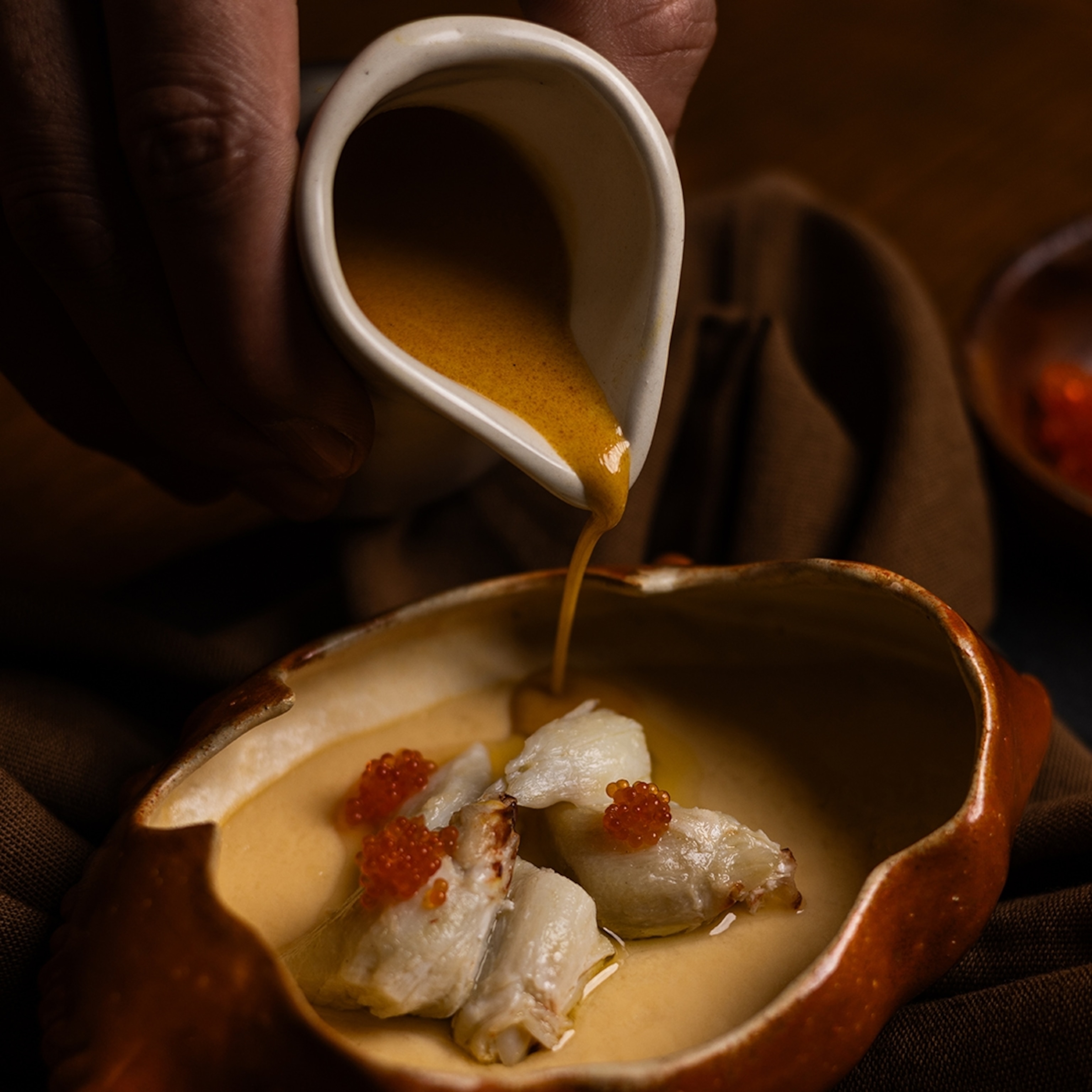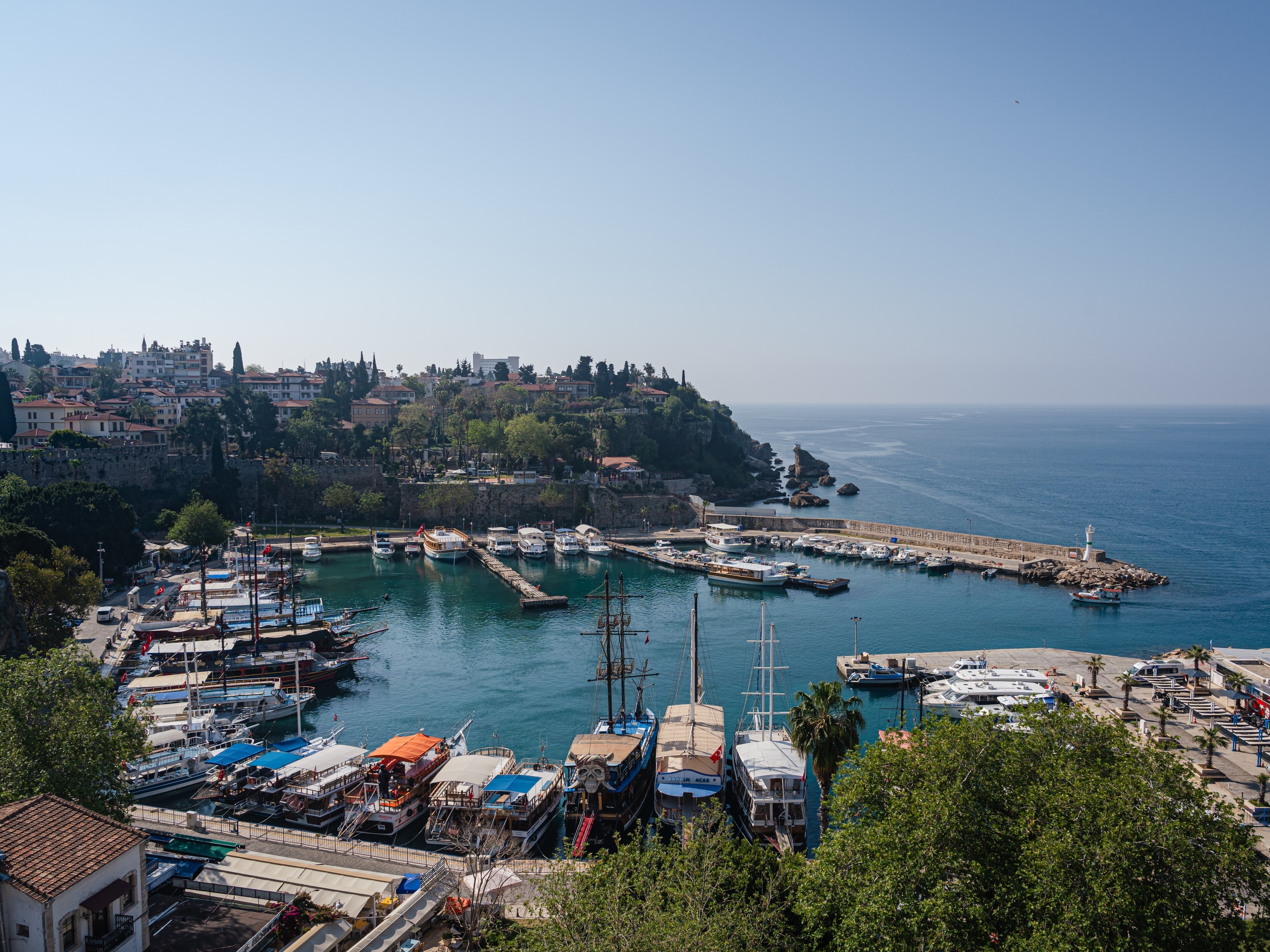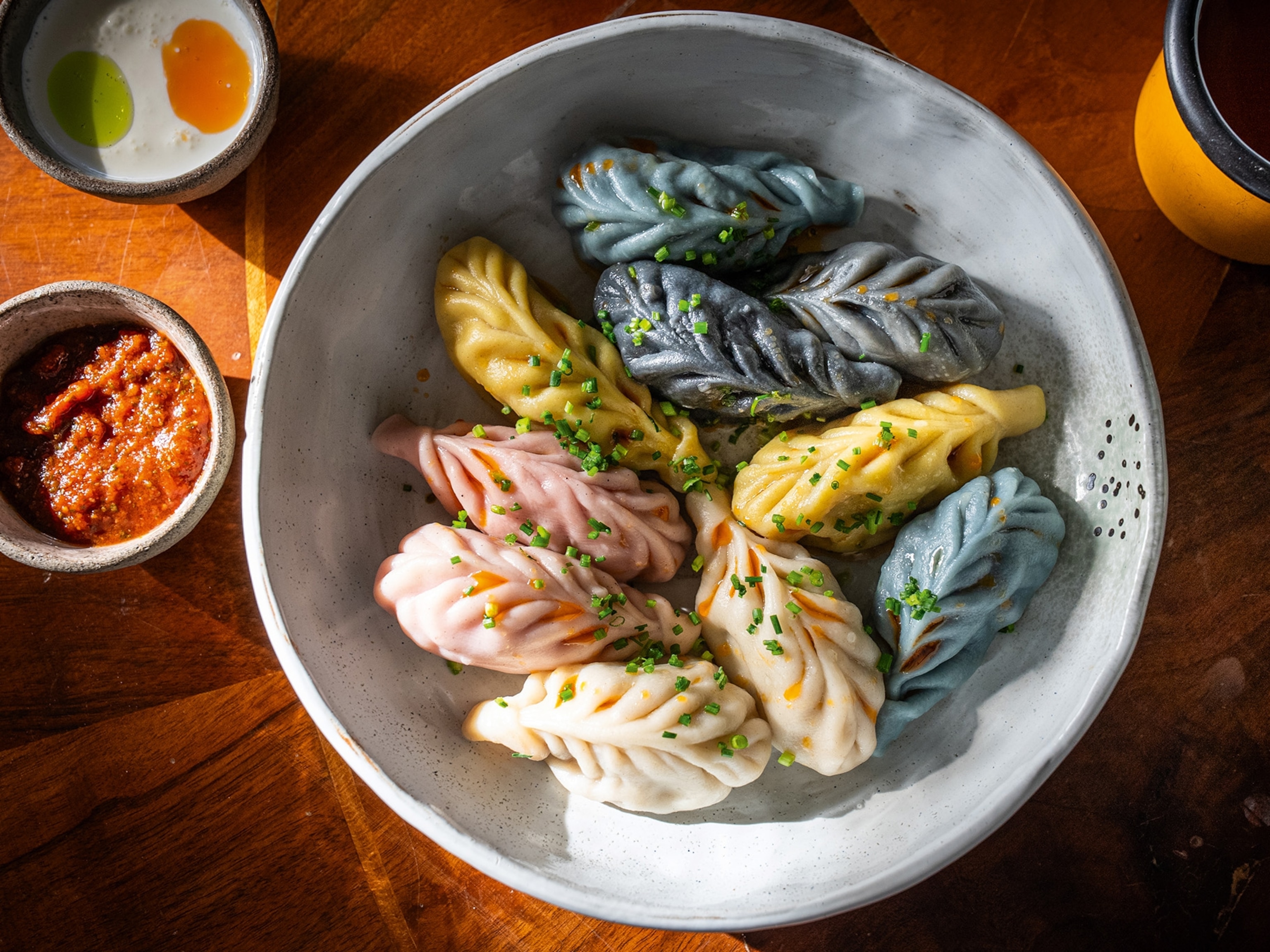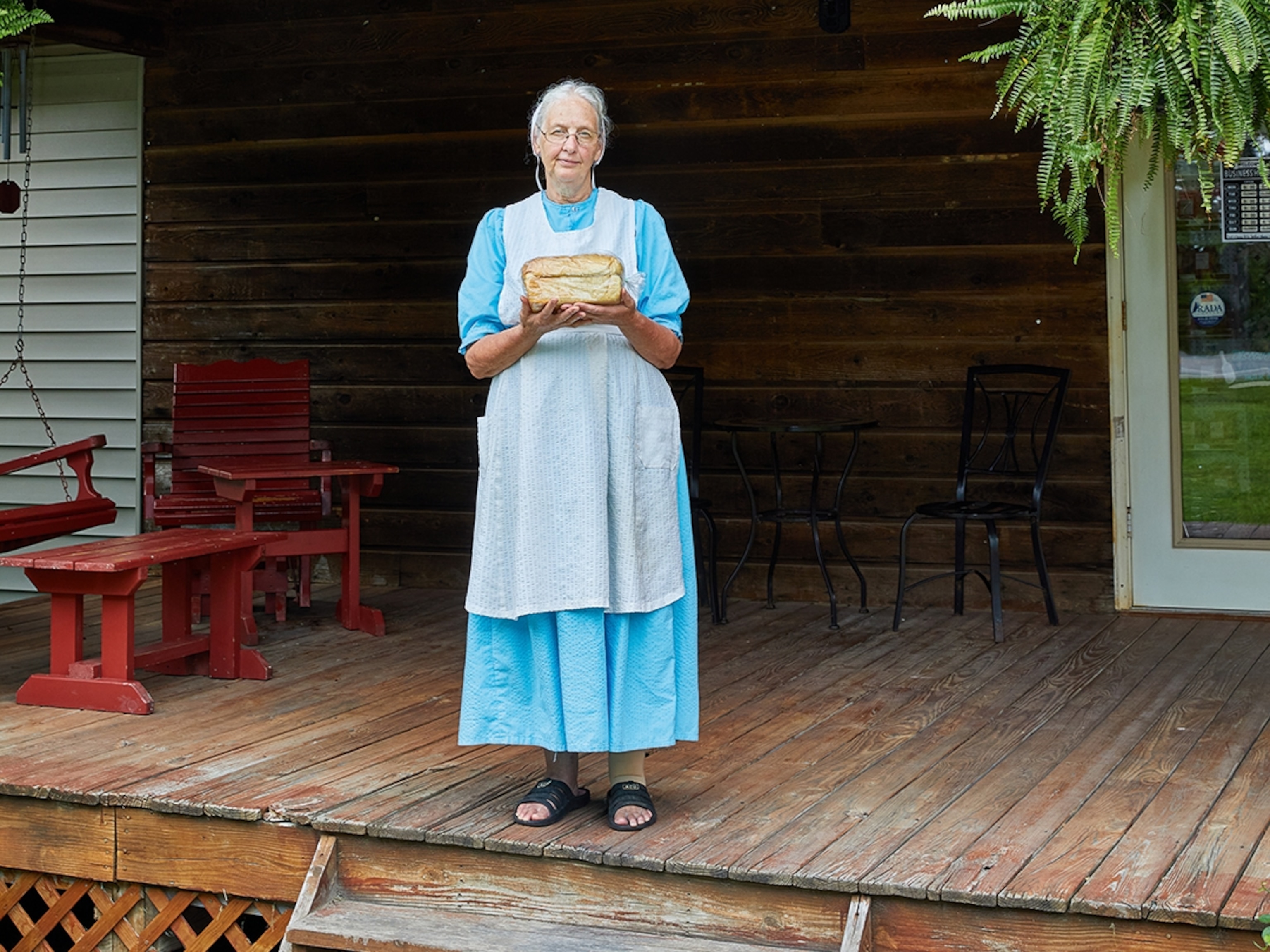
Forest flavours: on the hunt for black truffles in Western Australia
Western Australia’s Southern Forests region is home to a bountiful natural larder, including truffles that grow in such abundance they’ve turned the region into the Southern Hemisphere’s truffle capital.
It’s a winter’s morning on Wilgarup River Farm, but grey skies and a downpour don’t deter Mel Booth as she guides Molly, her adopted Labrador, along the rows of oak and hazel trees. Native bush borders the 150-acre property in Western Australia, and in a nearby paddock, Highland cattle are grazing. Molly lightly paws the earth through a carpet of fallen leaves. Kneeling, Mel works the soil with a trowel, then her fingers, before uncovering our prize — a black truffle weighing about 30g.
This variety is most commonly known as Périgord truffle — named for the region in southwest France that’s traditionally been the hunting ground for this sought-after ingredient — but menus have also begun namechecking Manjimup, the closest town to here. Advances in mycology mean black truffle can now be cultivated — in both hemispheres. The Southern Forests area, 185 miles south of Perth, offers a similar climate to Périgord, which explains why it’s now the largest producing region in the Southern Hemisphere and the heart of Australian truffle country.
Molly’s find infuses the crisp air with a heady aroma of truffle, which is technically the fruiting body of a subterranean fungus that grows on inoculated tree roots. Described by some as smelling like socks and sex — or, more pleasantly, having notes of chocolate or book leather — it’s like a glass of wine: subjective. Whether I savour the aroma in an orchard or a kitchen, I pick up a primal earthiness, a forest-floor funk.
The Booth family own Australian Truffle Traders, selling truffles grown on various farms, including their own, as well as offering seasonal tours from May to September. At the grading shed, the clock is ticking. Harvested to order, this morning’s haul is destined for London within 48 hours, where the truffles will be used by many of the capital’s two- and three-Michelin-starred restaurants. Mel’s brother, Michael Weitzmann, nicks each one with a knife to reveal desirable white, vein-like patterns on black (truffles are as prized by some chefs for their looks as they are for their aroma). Colour, weight, condition and shape all factor into the grade (‘extra class’, ‘first class’ or ‘pieces’) and ultimately price.
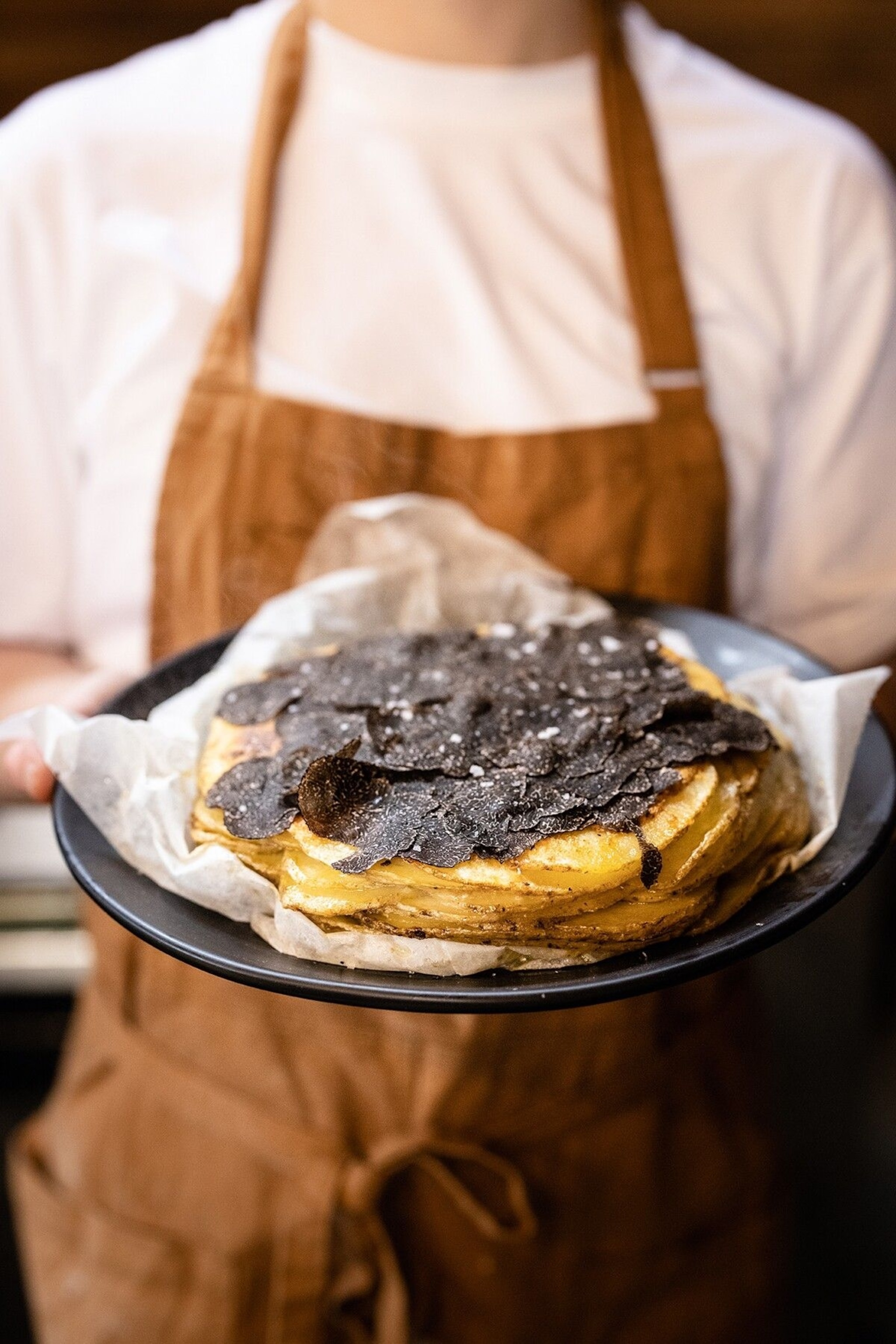
Over in the farmhouse kitchen, Gavin Booth, Mel’s husband, warms himself by the wood burner as he whips up some scrambled eggs. As a former Royal Navy chef, his diet now is a far cry from seagoing rations and the food he ate growing up in the West Highlands of Scotland. “I’d say we eat truffles at least once a week when they’re in season,” he says, cracking farm-laid eggs into a bowl. To that he adds single cream, then places copious amounts of butter in a pan. Unsalted, I ask? “Hell no — salt is key,” he says. You can finely grate truffle, but with this dish, Gavin likes the textural and visual appeal of a finely chopped julienne. As I take a mouthful, I revel in the aroma of a truffle only hours out of the ground, the slight bite a contrast to the soft, luscious eggs.
Gavin’s dedication to truffles is such that, not content with simply cultivating and eating them, he co-founded an entire festival dedicated to them a decade ago. Held each winter, Truffle Kerfuffle is a seasonal pilgrimage, a magnet for gourmet travellers from across Australia and as far afield as Singapore, Hong Kong, the UK and the US. Surrounded by farms, its home, Fonty’s Pool, offers a bucolic backdrop; what was originally part of a farm dam for irrigation became a local swimming spot in the early 20th century and is still used as such, although only a brave few are willing to take a dip here during the Australian winter. It still serves an agricultural function as part of a connected chain of dams irrigating the district; growing is at the heart of everything.
Amid the festival’s marketplace, which brims with local growers, winemakers and artisans, Gavin Booth and his team tend a row of pizza ovens. Hungry punters queue for their fix of freshly baked pizza, topped with liberally grated truffle.
Nearby, a stall set up by local restaurant Sööma sates appetites with three-cheese arancini heaped with truffle. Wine from the region’s makers is in abundant supply; while Margaret River, 90 minutes west, is world renowned for its chardonnay and cabernet sauvignon, Southern Forests has a growing reputation for its pinot noir and chardonnay.
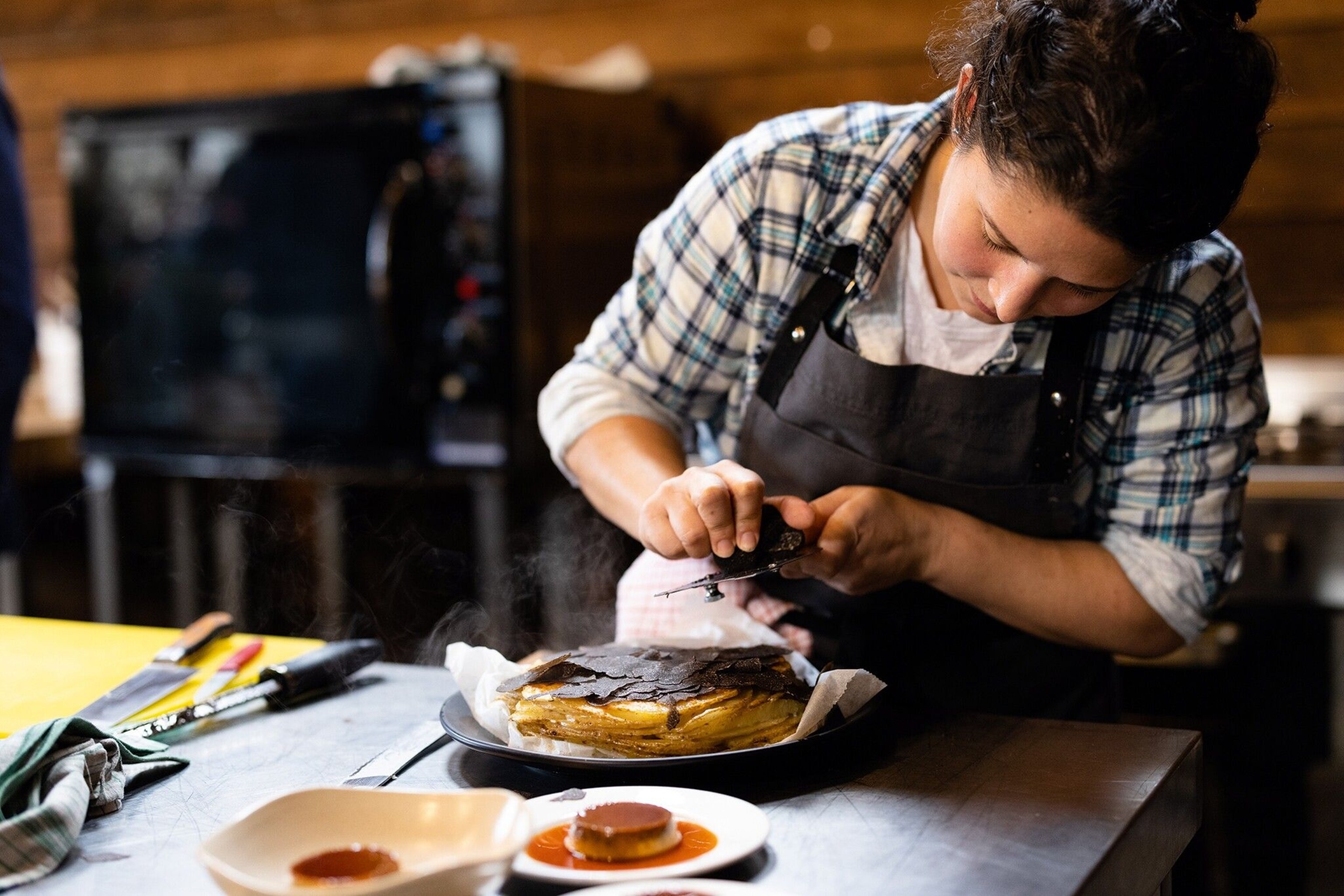
As I’m exploring the festival, I catch up with chef Analiese Gregory, who’s on her way to truffle hunt with the Booths. Although based in Tasmania’s Huon Valley, she’s a big fan of this region and the ingredients grown here. “It’s about the truffles, but also the produce of the season,” she tells me, namechecking celeriac, chestnuts, pumpkins, potatoes and marron — a freshwater crustacean that’s sweet, delicious and endemic to the local waterways. Analiese is typically a ‘hunt it, kill it, cook it’ kind of chef, but there will be less bloodshed this evening when she creates a dinner for 240 guests, and also hosts an intimate masterclass and tasting, where the focus will be local produce — including, of course, truffles.
While the market offers bites to pick up and take away, long-table dining events are the hot tickets, held in the festival’s pop-up restaurant, as well as at farms and other venues across the district. Chef Paul Iskov, of culinary pop-up Fervor, uses seasonal ingredients first brought to Western Australia generations ago, along with indigenous produce that’s been consumed by Aboriginal communities for tens of thousands of years. Just 15 miles from Fonty’s Pool — a mere hop and a skip in Australian terms — his team have set up long tables at the farm of Dave and Ildy Ikin, owners of Black Solitaire Truffles, in an open-sided farm shed overlooking the orchard.
Paul presents a perfectly cooked 63C egg, coral mushrooms, field mushrooms foraged from the property, sea-blite (a succulent shrub grown in salt marshes) and an oil of bloodroot, a bulb vegetable that grows “between Perth and Esperance [a southern coastal town]; getting stronger and spicier as you travel south”, says Paul.
It’s a dish that shows how ingredients can complement each other: the silky egg yolk is offset by the earthiness of the mushrooms, the bloodroot subtly cutting through the richness. It’s all enhanced with shavings of Black Solitaire truffle, a fact grower Dave finds thrilling. Getting into this line of work wasn’t planned: “We didn’t buy the property for the truffles. We were retired,” he says. “It’s rather like grabbing a tiger by the tail.”
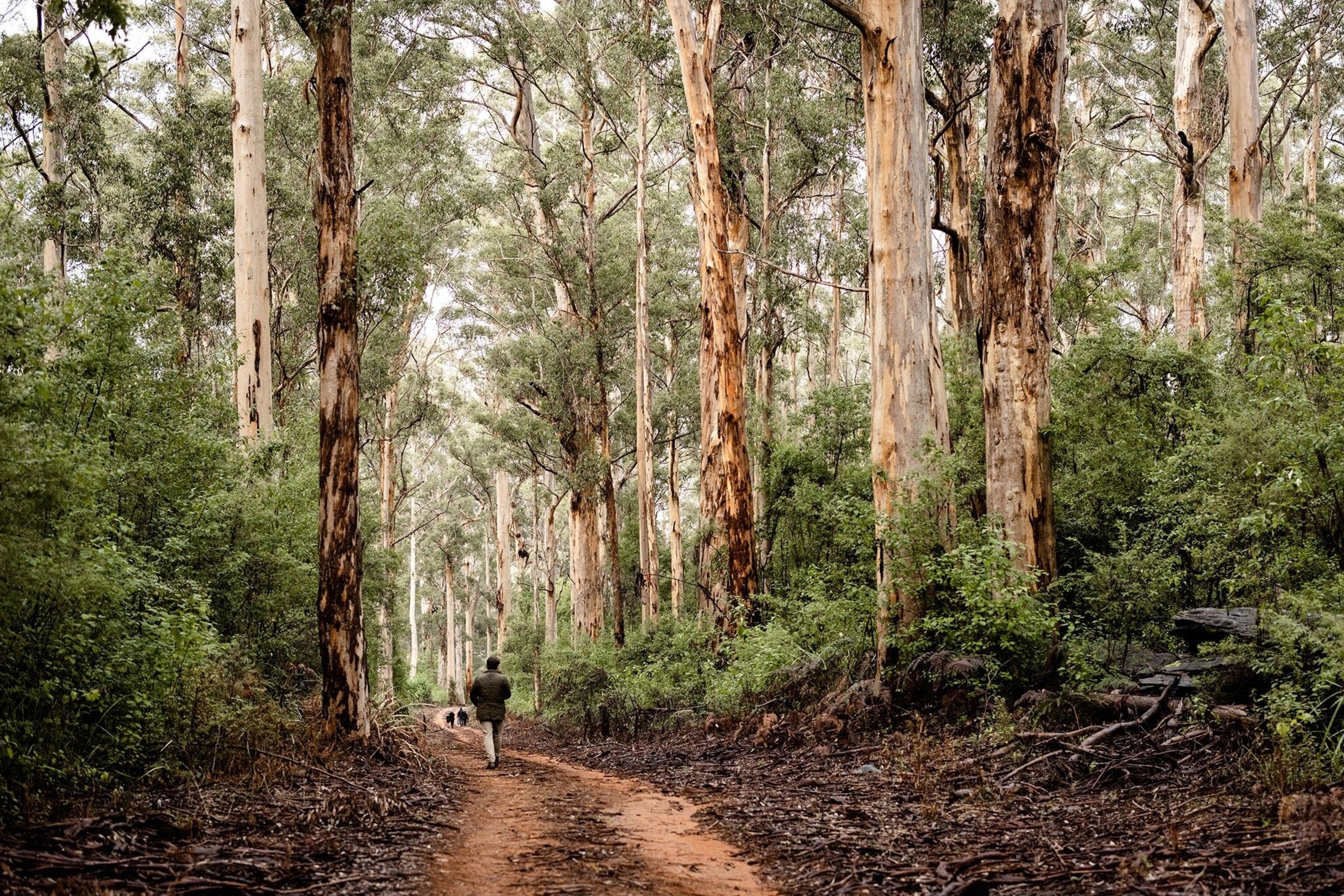
Broad roots
Nearby Manjimup has a quintessential Australian country town feel and is peppered with art deco frontages that hint at its boom years, in the early 20th century, when it was established by timber cutters, who were later joined by farmers. These days, it remains a small town, with a population of less than 5,000, but it’s increasingly attracting visitors with standout cafes, pubs and a newly opened brewery. At the end of one of the covered arcades, Sööma has played its part in bolstering the local food scene. “The name of the restaurant means ‘to eat’ in Estonian,” explains chef-owner Deb Sillaots. “I love what it represents. My father is Estonian; he gave me a passion for homemade food, watching him make sauerkraut, sausages and brawn.”
Sööma’s menu isn’t Estonian, however — it’s an eclectic culinary collection crafted, says Deb, “on my own whims”. Southeast Asian flavours are a current favourite, and many of her ingredients come from roadside honesty stalls — where passersby pick up produce that’s been left out and leave payment in return — along with things people bring her: feijoas, limes, pomegranates and yuzu.
“My Estonian aunt lived traditionally and preserved everything,” Deb says, placing a dish of duck-and-mushroom ‘cigars’ in front of me. White and black oyster mushrooms, king mushrooms and truffle are all encased in pastry, with a side of smoked creme fraiche and preserved sour cherries. It’s a meeting of preserved summer abundance and the earthy flavours of winter.
From here, it’s a 20-minute drive along winding country roads bordered by lush paddocks and towering karri trees to Pemberton. Like Manjimup, it was once heavily reliant on logging, but now tourism and agriculture are the economic mainstays. The journey between the two towns is lengthened by stops at the many honesty stalls along the way. Midway to Pemberton, Rick Scoones of Warren Grange grows heritage tomatoes, garlic and even the odd Carolina Reaper chilli, but it’s his ‘funky pumpkins’ that have made his name — he produces everything from delicata squash to marina di chioggia and warty galeux d’eysines — all of which are sold at his farm-gate stall.
Lisa Cudby uses Warren Grange ingredients at Wild at Heart, the cafe and providore she opened in Pemberton last year. Her rustic dishes draw on the best of the regional; a seasonal soup of cauliflower, apple and truffle is a hit, but it’s the mashed Prince of Orange potato, kale and courgette, paired with pork and sage sausages, that wins my heart. It also contains truffle, of course, a dash of local cream and homemade butter, says Lisa.
Her culinary journey was serendipitous. “There’s a French film, Haute Cuisine,” she tells me. “About a chef who cooks for the president of France. The very last line she says is, ‘I’m moving to New Zealand to grow truffles.’”
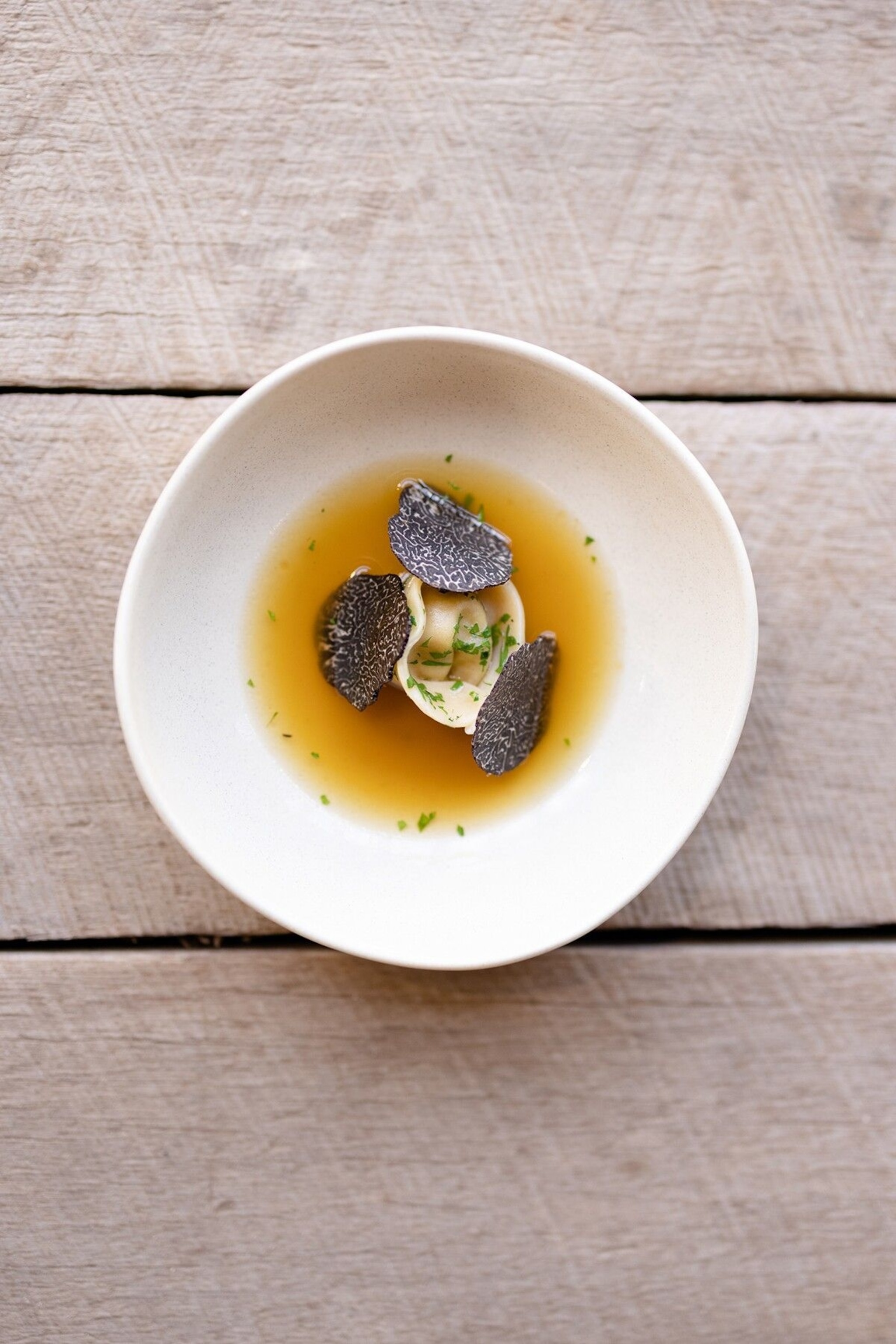
This was enough for Lisa and her husband Mick to be spurred into research. Within a week, they decided to uproot from Brisbane to chase the thought that they had “one last something” in them. That something is more than Wild at Heart — it’s also a farm just outside town, where they’re planning to ramp up vegetable production and already have an orchard of 3,000 inoculated trees, which produced their first truffles last year.
Perfect match
You won’t find a website for Batista Estate, or an email. Winemaker Bob Peruch only recently swapped his landline for a mobile. He’s happy with the slow pace of life in the Warren Valley, albeit one that revolves around his 10-acre vineyard and growing and making his own food: salami hangs in the winery shed, the hand-built pizza oven is well used.
From his kitchen table, Bob can see across the whole property, which was mostly cleared by his father, a migrant from Northern Italy, back in the 1930s. A patchwork of nationalities have arrived here over the years — among them Brits, Italians, Macedonians and Croats — and Bob has a theory that where they settled was about where they came from. Northern Italians and Macedonians were drawn to the hills and forests, while Southern Italians headed to the flatter areas. Bob talks of his father growing tobacco, and when that failed, getting into dairy, then potatoes and fruit trees.
“My father planted a vineyard in the 1950s, about two acres just for home use,” he says. And while it’s in the blood, and he’s planted over 20 vineyards, Bob is a self-taught winemaker. Some viticulturists favour a range of varietals, but he grows only pinot noir, simply because it’s what he likes. But this isn’t some backyard vanity project. Sommeliers in the know become excited by the mere mention of the name Peruch or Batista wines. Having walked the sloping vineyard and admired the winery, I sample the new vintage, which, although still young, has structure and restraint. Bob produces a bottle of homemade olive oil as a parting gift, and points to a tree weighed down with mandarins. “Take as many as you want.”
As well as grapes — and mandarins — apples grow in abundance in this area. Ash Lewkowski, of Southern Forest Cider Co, is a winemaker who switched to producing cider when a neighbour suggested he try his hand with their Pink Lady apples, a cultivar first bred in Manjimup in the 1970s. Applying winemaking techniques, Ash initially focused on yeast selection; champagne yeast — commonly used in Australian cider-making — is, he says “pretty benign”, so instead he used one usually reserved for pinot, bringing out the Pink Lady’s cherry and raspberry flavours. Skin contact is also key, so his crushed apples are left on skins for up to 15 hours.
“In winemaking, it’s skin contact that gives you flavour and character, but an apple has a low skin-to-flesh ratio, so getting that extra bit of flavour is pretty important,” says Ash. Like many Australian ciders, there’s an effervescence and a freshness to Ash’s drinks, as opposed to the out-and-out funk you’d get with, say, a scrumpy.

Back at Truffle Kerfuffle, as the festival is drawing to a close, Analiese Gregory stands behind a workbench in a lovingly restored apple-packing shed perched above Fonty’s Pool. The space is filled with afternoon light, a pile of Warren Grange pumpkins arranged in a stylised display. This is the Chef’s Cabin, an experience that goes beyond simply eating: as the chef cooks, we eat and learn. The 40 or so guests hang on her every word as she rolls pasta to make truffle agnolotti, one of the taster plates from the three-course masterclass. Each is matched with a local wine. Analiese is a chef I’ve long followed, beguiled by her work at Franklin in Hobart, Tasmania’s capital. Here in the Chef’s Cabin, I get the feeling she’s putting together dishes she really loves. As we watch, she takes a mandoline to a locally grown Neptune potato and starts to build a potato galette. It’s a take on pommes sarladaises, which she picked up working at London’s The Ledbury (a restaurant Australian Truffle Traders has supplied).
Cutting slices 2mm thick, Analiese layers them in a heavy, lined dish before weighing them down and baking. Once out of the oven, the pan hits the gas burner to crisp up the bottom. There’s one last touch: taking a truffle shaver, she goes to town with a generous amount of Manjimup truffle. It’s “more fragrant and stronger” than those from other places, she tells me. And her dish is one that encapsulates what the best cooking in this part of Western Australia is so often about: humble ingredients paired with precious ones, all tied together with technique, practice and passion.
Four culinary experiences to try
1. Tall Timbers
Manjimup wine bar and bottle shop Tall Timbers has a huge by-the-glass range of Southern Forests wine. Try anything from the storied Pannell family, small batch maker Lilian, or newcomers Chateau June-Jerome. Sister venue Tall Timbers Brewing Co is opposite, with beer brewed on site.
2. Genuinely Extraordinary Food Tours
Organised through the Southern Forests Food Council, these bespoke tours get to the heart of what’s growing in the region, from truffles and avocados to apples and stone fruit. Highlights also include locally prepared meals and wine tastings.
3. Jaspers
This Pemberton landmark is a place to discover Australian — particularly West Australian — whiskies, such as Limeburners, from the Great Southern region. It also offers food and accommodation.
4. Southern Roasting Co
A local hub on Manjimup’s main street, this roastery offers bags of beans, coffees and food including the odd truffle-based snack in season. There’s also a wood fire for chilly days.
Essentials
Getting there: Singapore Airlines, Qatar Airways, Emirates, Cathay Pacific and Malaysian Airlines offer one-stop flights from the UK to Perth, while Qantas flies 17 hours nonstop from Heathrow. The Southern Forests is a 3.5-hour drive from Perth.
Where to stay: RAC Karri Valley Resort has doubles from AU$289 (£155), room only.
How to do it: DialAFlight has 10 nights in Western Australia from £1,849 per person in 2022, including flights from Heathrow to Perth and room-only stays in Perth, Margaret River and the Southern Forests.
Published in Issue 13 (autumn 2021) of National Geographic Traveller Food (UK)
Follow us on social media
Twitter | Facebook | Instagram
